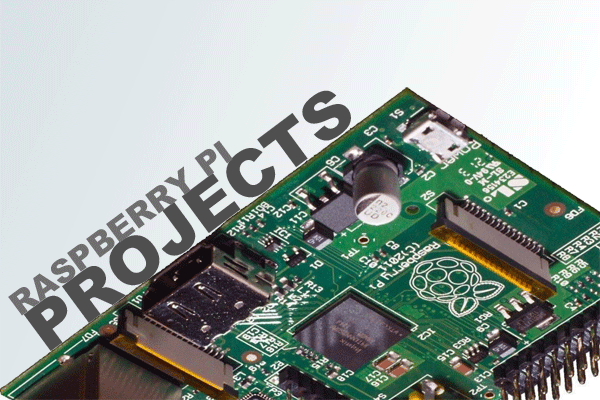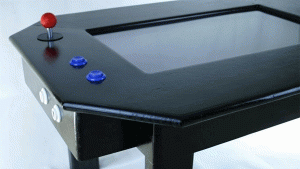Raspberry Pi projects: 10 of the best

The Raspberry Pi has been around for almost a year. And in that time we’ve seen a host of great projects, hacks and mods pop-up. Here are ten of the best, from a Pi-powered arcade coffee table to a pyrotechnics rig that could turn your back garden into a miniature rock festival. Well, that or a smouldering ruin. Read on for our top picks.
Have your own Raspberry Pi? Read our Raspberry Pi Ideas feature >
1. R2 D2
This is beyond cool. The voice-controlled R2D2 robot would be technologically impressive even if it wasn’t powered by a cheapy £30 Raspberry Pi computer.
It was made by Ph. D student Lingxiang Xiang for his girlfriend. And apparently she likes it “pretty much”, the lucky thing.
The R2D2 robot started out its life as an interactive Star Wars toy, but Lingxiang gutted the toy and jammed-in a Raspberry Pi as well as a bunch of other off-the-shelf components to make the truly impressive gadget. As well as being able to move, the R2 unit is also equipped with voice recognition, motion detection, distance detection, Wi-Fi, a camera and face recognition software.
He can obey commands such as “come here”, “turn left” and “record”, just as he does in the original Star Wars films. It’s enough to make you misty-eyed.
A lot of technical know-how has gone into putting R2D2 together, but the whole system runs on the core of a Raspberry Pi with the Debian-based Raspbian OS installed. Linxiang is planning on posting instructions on how to make your own clever R2 unit online soon.
2. Arcade Coffee table
Custom-built arcade coffee tables and restored arcade cabinets that run the MAME software can cost thousands of pounds. But with a bit of elbow grease, you can make your own. Graham Gelding did just that, with the help of a Raspberry Pi computer, back in October 2012. 
He posted step-by-step instructions on how his was made over at Instructables. The MAME-based Raspberry Pi coffee table has a 24-inch LCD screen, integrated speakers and bonafide arcade-grade controls. It’s a one-player table, but looks the part and cost just a fraction of a custom-made setup.
Mr. Gelding didn’t go into too much detail about what emulation software and which OS the Raspberry Pi running the show uses, but that’s really up to you. Unlike many Raspberry Pi projects, the arcade coffee tablet is as much about the hardware, the literal nuts and bolts, as the programming that has gone into making the games work.
3. Xbian
One of the most practical of upscale Raspberry Pi projects, Xbian’s aim is to get the XBMC media player software working as efficiently and as well as possible on the low-cost computer.
And the Xbian team wants to make installing it accessible for those without a degree in computer science.
What makes Xbian so sleek is that the Rapberry Pi boots straight into it, rather than first jumping into a Debian OS screen. This means it really can turn a Pi into a home media centre. 
The Xbian website provides an excellent set of instructions on how to get the software installed and running, link below.
Although there are four key developers working on Xbian at present, it’s an open source project with a thriving community surrounding it. Other dev works outside of this main crew is not only possible, but encouraged.
4. Pi in the Sky
The Pi in the Sky project is the work of one Dave Ackerman, a chap from the UK who’s into ballooning. It saw the Raspberry Pi computer take a trip tens of thousands of feet into the air, housed in a cardboard box.
The Raspberry Pi’s job in the expedition was to act as a photo streaming device – being the eye in the sky. Ackerman hooked the Pi up to a GPS unit, 3G dongle and a webcam, to let it track the balloon’s voyage.
It rose to over 30,000m before the balloon popped. Thankfully, the payload included a parachute and the Raspberry Pi lived to tell the tale. Ackerman has posted a bundle of pictures captured by the connected webcam on his website. 
5. The teeny tiny arcade machine
Ever fancied an arcade machine that’s not much bigger than a packet of cards? Us neither, but SpritesMods took it upon itself to create just that.
Using a 2.4-inch LCD display, a laser-cut transparent plastic cabinet and some truly tiny controls – a joystick and four buttons – and two phone batteries, the franken-cade was made. There’s even a second OLED display that displays the logo of the game you’re playing.
SpritesMods has made a video of the Raspberry Pi arcade cabinet running AdvanceMAME, and playing a bunch of classic retro games. As its maker admits, “So now, I’m going to totally play old-school games for hours on end… on a tiny 2.4″ display… while I have something more powerful in my back pocket… wait, why did I build this again?” However, this is undoubtedly one of the most gadget lust-inducing Raspberry Pi projects we’ve seen.


